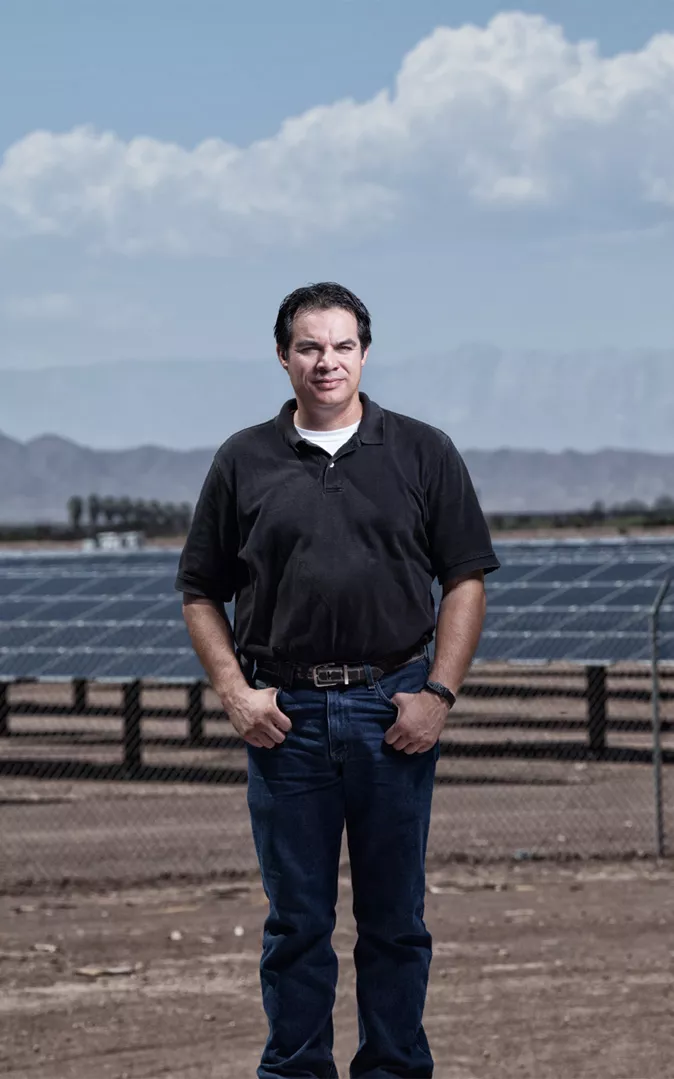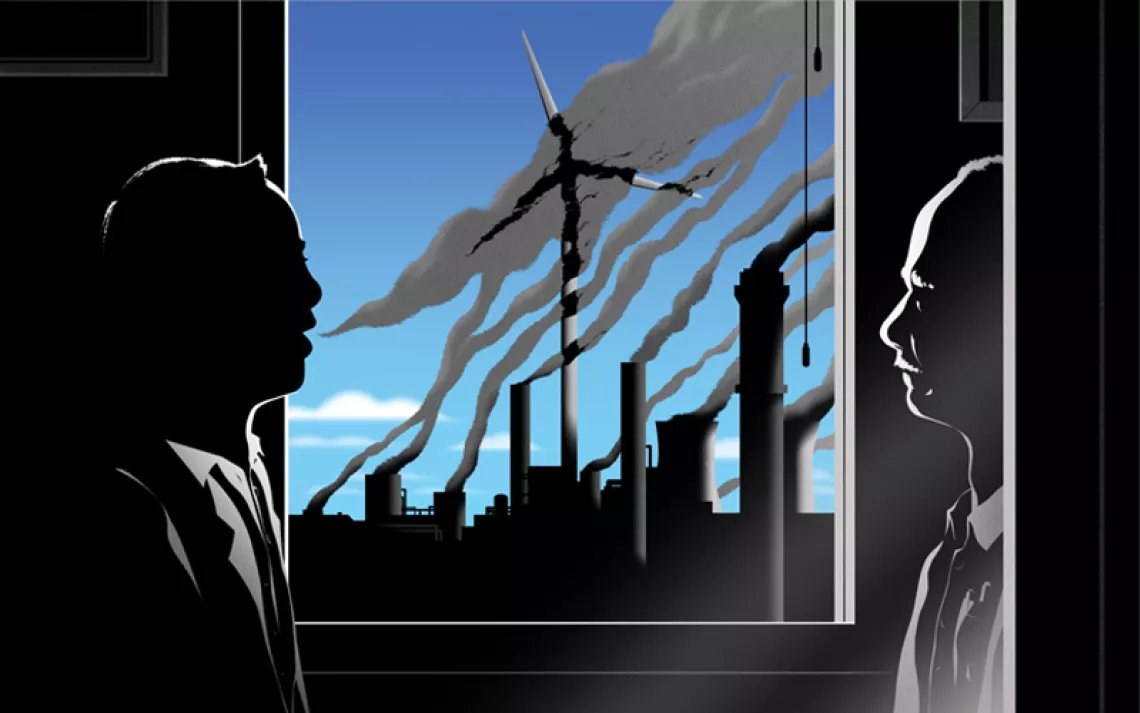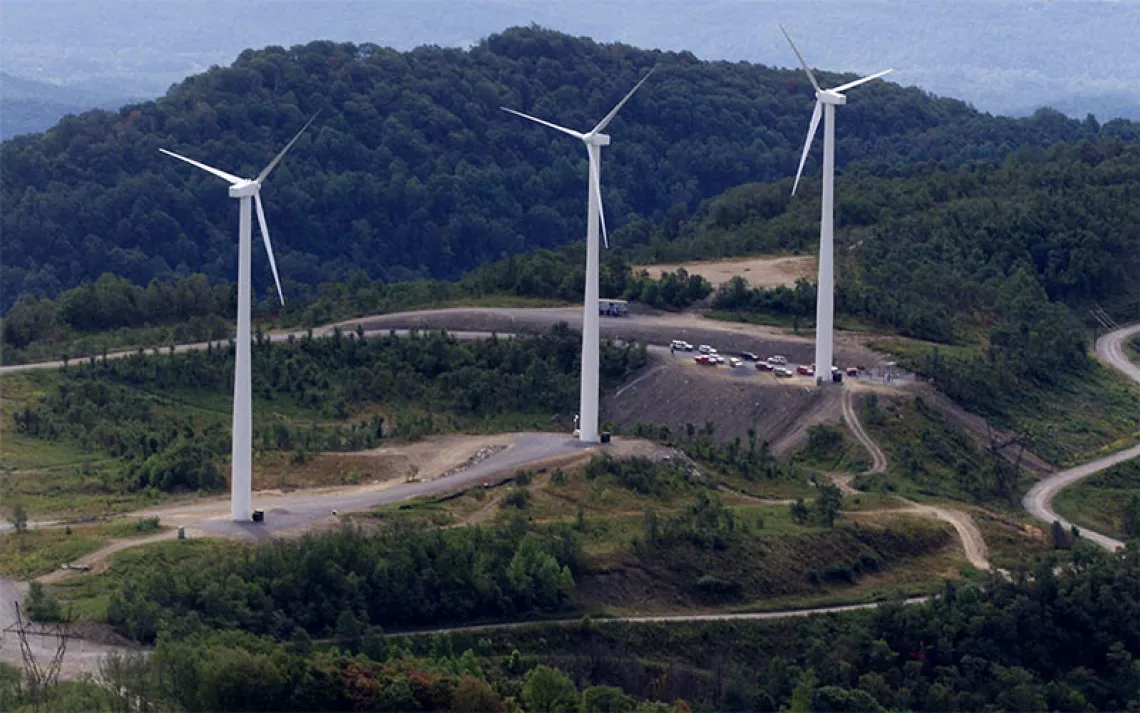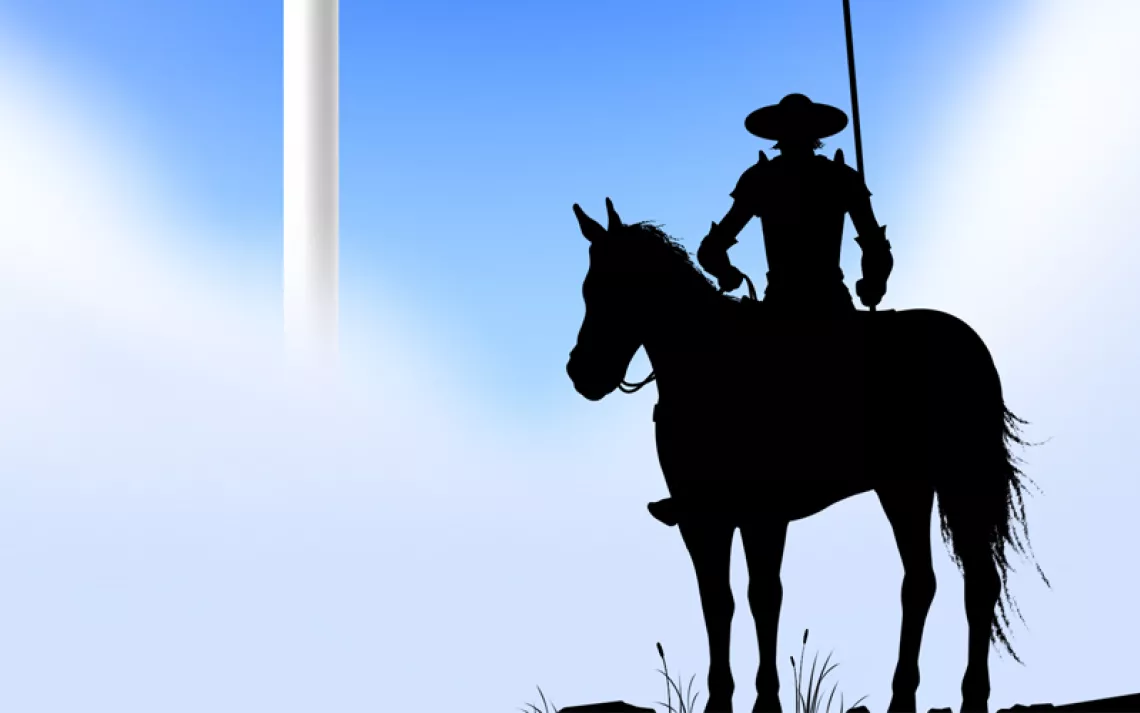Solar Connector
Domingo Reyes-Gastelum, electrician, Calexico, California

Domingo Reyes-Gastelum, electrician, Calexico, California
I'm an electrician building solar plants in the Imperial Valley, in the southeastern California desert. These are medium-scale and large-scale plants that produce electricity for San Diego and Los Angeles.
I worked on a First Solar project for roughly five months, finishing in May. I installed solar modules, then became the crew leader in charge of remediation—we go back and fix all the details that are left behind. They can be electrical or structural. It's all about quality assurance and quality control.
The project is about 30 miles north of the Mexico border. It has three fields covering 1,450 acres and generates 150 megawatts and was built on unused farmland.
I love the electrical work, especially working on the cable terminations. We connect all the wiring that goes underground and the panels to each other. We connect the DC module to an inverter. From there, the electricity goes to a substation, where it is converted to AC so that it can go to the transmission line and be delivered to the cities. The Imperial Irrigation District, which is in charge of the electricity supply in the Imperial Valley, sends the electricity onto the grid.
With these jobs, you have to look at the big picture. Right now it's a big boom, with people working on these projects all over the country. The problem I see is down the road, making sure these projects last so that people continue working. When I started working on solar projects, I had nonstop work for two years. I was supposed to start a new project in June, but it's been postponed to the end of the year.
I'm hoping solar construction projects in the valley will continue for at least another five to seven years. But solar projects depend on "Obama money." It's not clear whether new projects will come once he's out of office. There will be maintenance jobs, so you can put a lot of people to work on construction, and some of them can return to do maintenance. That's where I may end up.
I got involved with the International Brotherhood of Electrical Workers through a job fair in Imperial County in 2012. They were looking for people to work on the Imperial Solar Energy Center South project near El Centro, which also provides power for San Diego Gas and Electric. At the time, I was doing engineering work, mainly land surveys, but the economy was tough. I met with the union reps, and a year later I started working.
I was in their second group, so my training was on-the-job. The new people coming on board today get seven weeks of training before they start a job. Depending on when you get called in, you can begin with the underground wiring or come in to work on the aboveground connections, joining the panels together and working on the combiner boxes, where the electricity from strings of photovoltaic modules meets.
The union has at times had 1,000 people working in Imperial Valley. I'm in a five-year apprenticeship program that'll make me a journeyman wireman. The program includes 8,000 on-the-job training hours and 2,000 classroom hours. While I'm in it, my family gets health care, and I get a pension retirement contribution.
The good thing is my electrical training can be used on nonsolar projects, and I know the union is looking at them, too. The Imperial Valley is a hard place to get work. It has high unemployment—a few years ago it topped 30 percent, the highest in California.
But the valley is my home. I was born here, moved to Mexico, and returned as an adult, with a B.S. in engineering. I'm 40 years old. I love the desert. I love running and swimming in the heat. It's 105 degrees today. I train in the morning. You get used to it. Even on a job, after three or four days you're used to the heat.
I live with my wife and my girl and boy, who are 9 and 10, in Calexico. They ask me how solar works, how you can use solar for the house. It's something new for them. My youngest and I both have asthma. I hope the solar projects can help the air pollution problem in the Imperial Valley.
Any construction work is boom and bust. You never know how long it will last. But my training will take me as far as I want to go.
Photo by P2 Photography
This article was funded by the Sierra Club's Beyond Coal campaign.
 The Magazine of The Sierra Club
The Magazine of The Sierra Club







